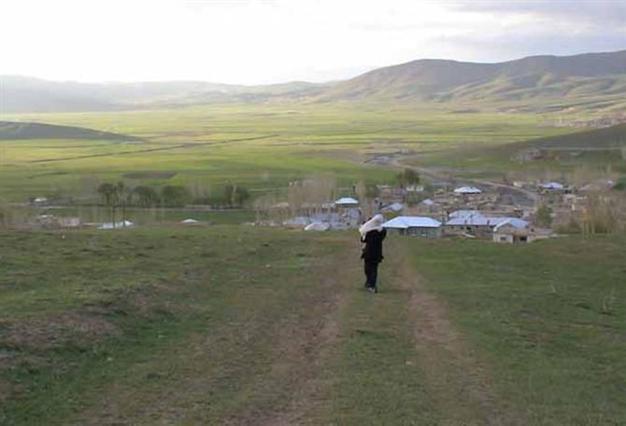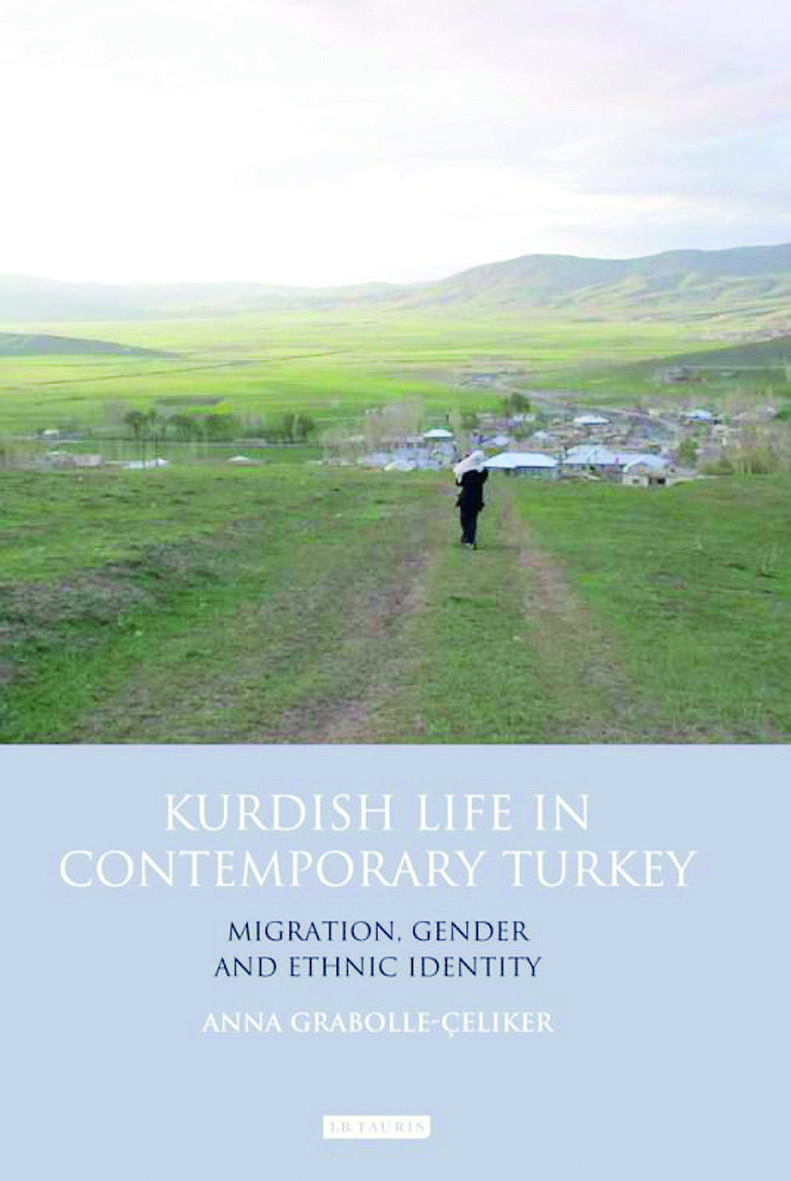Kurdish life in contemporary Turkey
William ARMSTRONG - william.armstrong@hdn.com.tr
 ‘Kurdish Life in Contemporary Turkey: Migration, Gender and Ethnic Identity’ by Anna Grabolle-Çeliker (I.B. Tauris, £62, 299 pages)
‘Kurdish Life in Contemporary Turkey: Migration, Gender and Ethnic Identity’ by Anna Grabolle-Çeliker (I.B. Tauris, £62, 299 pages)Today, almost 80 percent of Turkey’s population lives in urban areas, up from 20 percent in 1955. The effects of this urban-rural sea change have been pored over by sociologists, but they generally receive too little wider attention. This despite the fact that it can be argued, with a little generalization, that Turkey’s two most significant political movements of the past 30 years – Islamism and Kurdish nationalism – are at least partly the result of identity renegotiation prompted by the move from the periphery to the urban center (or the edge of the center). This stimulating book by sociologist Anna Grabolle-Çeliker is the result of 12 years’ involvement with migrant and non-migrant Kurds from the southeastern province of Van. An academic text, the lay reader might wish it would succumb to a little more crude generalizing, and the author sometimes seems oddly reluctant to place the experiences of her subjects in a broader Turkish context. But her book is nevertheless full of insight, focusing on the deep and too-often underappreciated effects that migration has had on Kurdish identity, the role of women, and the popular understanding of religion.

Grabolle-Çeliker’s research was conducted among communities in three locations: A village in Van province and migrant districts in the cities of Van and Istanbul. Settlement in urban areas, she finds, has forced migrants to ask all kinds of fundamental questions about themselves. In village life, “Kurdish ethnicity [is] an everyday experience based on shared experiences of language, religiosity, socialarity, and conventions of modesty and respect, with little larger need for explicit for explicit identity politics.” Migration to towns and cities, however, has led to the “increasing corporateness of Kurdish identity … It is through the necessity of renegotiating boundaries that Kurdish identification has become more salient for many.” At the same time, divisions that used to be all-encompassing in rural areas have diminished in importance; for example, the hold of tribal and lineage structures, while still persisting in certain forms, has weakened in cities, as roots have been loosened and consciousness has risen about the “higher” identity of Kurdishness. This is particularly the case among those emptied out of their villages by the state, a regular occurrence since the eruption of hostilities between the Turkish military and the Kurdistan Workers’ Party (PKK) in the 1980s - though it’s true that both sides have engaged in such village evacuations.
A similar process occurred with the increased “religious consciousness” also prompted by urban migration, and some of the most striking parts of this book are those probing the way these two things very often intersect. One particular case study is that of a young woman named Nur, a Kurdish villager who migrated with her family to an Istanbul suburb when she was six. The author describes how Nur, now a housewife, experienced a religious awakening of sorts in the city, encouraged by the greater opportunities available there. With more time free to dedicate to contemplating religious texts, Nur began to teach women at a Quran study group every day at a local mosque, as well as children during school holidays, and she now also organizes regular prayer meetings at women’s houses in her neighborhood. She has also decided to adopt the all-enveloping black çarşaf covering, even to the disapproval of her husband, in a physical display of her new-found piety that would have been unthinkable back in the village in Van, where such covering is unheard of. As such, Nur is presented by the author as a woman whose understanding of her role as a woman and as a Muslim has undergone profound changes, due to her shift to the urban environment. Although it would seem paradoxical to many, her agency as a woman apparently increased (with obvious limits) along with her religious devotion.
In one common Kemalist misconception, political Islam is caricatured as an anti-modern rural development, defined in opposition to the traditional metropolitan elite. Accommodation of politicized Kurdishness, meanwhile, is similarly criticized as a concession to a “backward” and “tribal” social order that has resisted the republican modernization drive. However, these interpretations fail to recognize the essentially modern, urban origins of both phenomena, which have been fundamentally shaped by the migrant experience. As a guide to aspects of both processes, this book is well worth reading.
 ‘Kurdish Life in Contemporary Turkey: Migration, Gender and Ethnic Identity’ by Anna Grabolle-Çeliker (I.B. Tauris, £62, 299 pages)
‘Kurdish Life in Contemporary Turkey: Migration, Gender and Ethnic Identity’ by Anna Grabolle-Çeliker (I.B. Tauris, £62, 299 pages) Grabolle-Çeliker’s research was conducted among communities in three locations: A village in Van province and migrant districts in the cities of Van and Istanbul. Settlement in urban areas, she finds, has forced migrants to ask all kinds of fundamental questions about themselves. In village life, “Kurdish ethnicity [is] an everyday experience based on shared experiences of language, religiosity, socialarity, and conventions of modesty and respect, with little larger need for explicit for explicit identity politics.” Migration to towns and cities, however, has led to the “increasing corporateness of Kurdish identity … It is through the necessity of renegotiating boundaries that Kurdish identification has become more salient for many.” At the same time, divisions that used to be all-encompassing in rural areas have diminished in importance; for example, the hold of tribal and lineage structures, while still persisting in certain forms, has weakened in cities, as roots have been loosened and consciousness has risen about the “higher” identity of Kurdishness. This is particularly the case among those emptied out of their villages by the state, a regular occurrence since the eruption of hostilities between the Turkish military and the Kurdistan Workers’ Party (PKK) in the 1980s - though it’s true that both sides have engaged in such village evacuations.
Grabolle-Çeliker’s research was conducted among communities in three locations: A village in Van province and migrant districts in the cities of Van and Istanbul. Settlement in urban areas, she finds, has forced migrants to ask all kinds of fundamental questions about themselves. In village life, “Kurdish ethnicity [is] an everyday experience based on shared experiences of language, religiosity, socialarity, and conventions of modesty and respect, with little larger need for explicit for explicit identity politics.” Migration to towns and cities, however, has led to the “increasing corporateness of Kurdish identity … It is through the necessity of renegotiating boundaries that Kurdish identification has become more salient for many.” At the same time, divisions that used to be all-encompassing in rural areas have diminished in importance; for example, the hold of tribal and lineage structures, while still persisting in certain forms, has weakened in cities, as roots have been loosened and consciousness has risen about the “higher” identity of Kurdishness. This is particularly the case among those emptied out of their villages by the state, a regular occurrence since the eruption of hostilities between the Turkish military and the Kurdistan Workers’ Party (PKK) in the 1980s - though it’s true that both sides have engaged in such village evacuations.